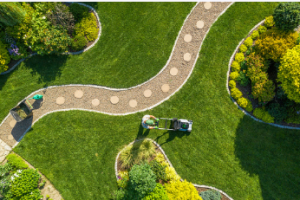Home » Landscape Design
Category Archives: Landscape Design
Planning and Composition in Landscape Design
Landscape design is a profession that bridges the gap between garden design and landscape architecture. A landscape designer uses different tools and techniques to create the overall look of a landscape. The process of landscape design starts with planning. Several stages are involved in the design process, including planning, composition, and design concepts.
Common tools of composition
Common composition tools in Landscape Design SA include lines, shapes, and textures. They help to guide the viewer’s eye through a landscape and create a sense of connectivity. Vertical lines, for example, carry the eye upward, and a strong horizontal line makes a small space seem larger. Lines also have the power to invoke emotions. A straight line can convey a formal, structured feeling, while a curved one can convey a gentle, natural one. You should consider the lines in your landscape design when choosing hardscape elements such as plants and flowers and when shaping beds.
 In landscape photographs, a strong foreground element helps guide the viewer’s eye from foreground to background. A strong foreground element also gives your image a sense of depth and three-dimensional impact. The foreground should create a focal point but not overpower the rest of the layers.
In landscape photographs, a strong foreground element helps guide the viewer’s eye from foreground to background. A strong foreground element also gives your image a sense of depth and three-dimensional impact. The foreground should create a focal point but not overpower the rest of the layers.
Forms are another important element of landscape design. The shape of an object can be formal or relaxed, depending on the overall look and feel of the landscape. Consider the style of your house before choosing your landscape form.
Planning
A landscape design plan is an important part of any landscaping project. It will help you see your options and save you a lot of money. You can draw a plan yourself or use a landscape design software program. Either way, the sketch will help you visualize your landscape ideas. Then, once you have completed the sketch, you can make changes based on it.
Creating a master plan
When you are planning a landscape design project, it is important to create a master plan for the project. This document should include 2D and 3D designs, plant and material guides, sizes and measurements, and an outline of the project. A landscape master plan will also allow you to make sure that you will have enough resources to complete the project successfully.
In addition to planning for maintenance and construction, you should also consider the use of the landscape. For example, if it is a working farm, the master plan will provide guidelines for preserving the site’s ecosystems while enhancing their productivity and profitability. For example, a master plan can also include a design that promotes the use of native plants.
It is also crucial to consider transportation and land use. A master plan should include a transportation hierarchy and the location of public transport routes, cycle paths, and pedestrian and bike paths. Lastly, it should include the design of multiple land uses, including residential and office space.
Creating a garden design
A key to creating an attractive garden is incorporating varied scales and focal points into the layout. Large trees and other plants are often the focal points of a garden design, but they must be balanced by varying levels of shrubs, perennial flowers, and ground cover. For this reason, it is important to consider your location before you begin designing.
In addition, it is important to keep an open space for people to move about. Children and pets are sure to need space to run around, so be sure to choose plants that can withstand some abuse. Consider plants that are low-growing and resistant to damage. Also, consider the type of area you live in when choosing plants.
Form themes are important considerations for all gardens. Form themes can be simple or elaborate, but they will help guide the selection of plants and materials.
Many people turn to garden magazines or books for inspiration. While these books and magazines are a great place to start your search, look at the photographs and the site with a critical eye. It will help you create a design that will complement the rest of your home.
Creating a public space
Creating a public space is about creating a unique and engaging environment that can accommodate a variety of users. This type of space requires a thoughtful and flexible approach to design. It should be designed so users can interact with it in the ways they most desire rather than focusing solely on narrow stylistic concerns.
This type of design requires a bottom-up approach, which involves community participation. This approach maximizes engagement with the public space, enables stakeholders to identify problems, and creates a common ground between residents. By involving the community in creating public spaces, creating them is more likely to be successful. The importance of a community-based approach to design cannot be overemphasized.
Public spaces differ in style, from informal street corners to grand civic set pieces. Traditionally, these spaces have been perceived as the heart of settlements and the focus of public life. They provide places to meet, relax, play and have visual breaks in the flow of city streets. However, recent trends in urban design are challenging the conventional conception of public space.
Public spaces are important because they help shape healthy urban environments. As such, we are responsible as landscape architects for creating socially sustainable environments that support diverse social interactions. Using a bottom-up approach, landscape architects can’re-stitch’ fragmented urban environments and create accessible and inclusive spaces.